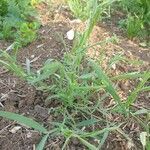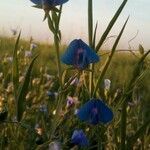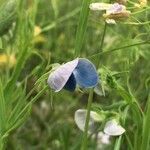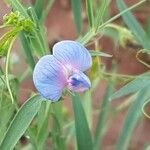An annual herb. It is a scrambling plant. It grows 100 cm high and spreads 100 cm wide. The stems are winged. The leaves have stalks. The leaves have 3 leaflets. The leaflets have short stalks. The leaflets are 2-5.5 cm long. The tendrils branch. The flowers are blue or reddish-purple. The fruit is a flat pod.




